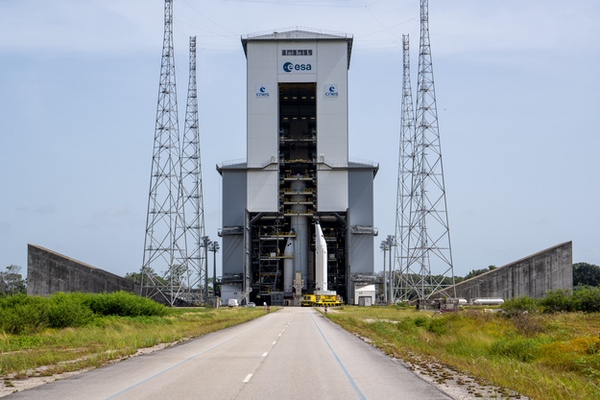 The first Ariane 6 is taking shape at the spaceport in French Guiana for a launch as soon as this summer. (credit: ESA/ArianeGroup/Arianespace/CNES) The first Ariane 6 is taking shape at the spaceport in French Guiana for a launch as soon as this summer. (credit: ESA/ArianeGroup/Arianespace/CNES) |
Europe looks to end its launcher crisis
by Jeff Foust
Monday, May 6, 2024

In the early morning hours of April 28, the European Space Agency and European Commission celebrated the launch of the latest two Galileo navigation satellites. But in the announcements of the launch and confirmation that the two satellites were working well in orbit, there was something missing: just how the satellites got into orbit.
| “Statistically, there’s a 47% chance the first flight may not succeed or happen exactly as planned,” Aschbacher said, citing the track record of first launches of new large launch vehicles. |
For example, the release by the European Union Agency for the Space Programme (EUSPA), the EU office that manages Galileo, highlighted not their launch so much as their “their successful injection into orbit.” You might not even know that this injection was done by a rocket at all beyond a passing reference to “a launcher” used to deploy them. The name of that launcher was never mentioned.
It’s understandable, though, why the EU in particular was giving the rocket the Lord Voldemort treatment. Unlike previous Galileo satellites launched on Ariane 5 and Soyuz rockets from French Guiana, these two were launched on a Falcon 9 from Florida. The EU reluctantly agreed to turn to Falcon 9 because of the retirement of the Ariane 5 and loss of the Soyuz had created a “launcher crisis” for Europe, temporarily depriving it of the means of launching Galileo or other large satellites on its own.
There are signs, though, of an end to that crisis. If all goes well, by the end of the year Europe will have several options to launch satellites on European rockets, from the long-delayed successor to the Ariane 5 to a new lineup of small launch vehicles making their way to launch pads.
The key vehicle to those efforts is the Ariane 6, the successor to the Ariane 5 once planned to begin launches in 2020 to overlap with Ariane 5 but which will instead fly at least a year after the final flight of the Ariane 5. Late last year, ESA and its partners on the vehicle set a target launch period for the Ariane 6’s debut: between the middle of June and the end of July of 2024.
For now, the Ariane 6 team is sticking to that schedule. On April 26, ESA formally announced the start of the launch campaign for that inaugural flight. At the spaceport in French Guiana, the two solid rocket boosters for the vehicle were moved into place on either side of the Ariane 6 core stage.
“Having the rocket stages together on the launch pad marks the start of a launch campaign and shows we are almost there: soon we will see this beauty soar to the skies,” Josef Aschbacher, ESA’s director general, said in a statement.
Neither ESA nor the others involved with the launch, like vehicle prime contractor ArianeGroup, have provided an update on the launch date. In an April 26 joint update, the partners said they were wrapping up a qualification review for the launch that officials earlier said would allow them to refine the projected launch date. The results of the review were to be announced at the “beginning of May,” the update stated. As of May 6, the Ariane 6 team had not provided another update.
The stakes of the first Ariane 6 launch are high, and Aschbacher, speaking at the 39th Space Symposium last month, worked to set expectations. “Statistically, there’s a 47% chance the first flight may not succeed or happen exactly as planned,” he said, citing the track record of first launches of new large launch vehicles. “We’ll do everything we can to make it a successful flight but I think it’s something that we have to keep in mind.”
| “We’re getting very, very close to launch,” said Isar’s Guillen. “Our first launch is scheduled for the summer.” |
There is also the Vega C, a smaller vehicle that failed on its second flight in December 2022. ESA has said it is working to return that vehicle to flight by the end of this year, as prime contractor Avio works to fix the problems with the vehicle’s solid-fuel second stage motor. Aschbacher confirmed that schedule for Vega C’s return to flight in his Space Symposium presentation.
Meanwhile, other European companies are racing to get their smaller rockets to the pad, seeing who can be first to get to orbit. Last month, Rocket Factory Augsburg (RFA) announced it had shipped the first stage for its first RFA ONE rocket from its German factory to SaxaVord Spaceport in the Shetland Islands. There, the stage will undergo a hotfire test ahead of a first launch later this year.
RFA is racing with Isar Aerospace, another German company whose Spectrum rocket is being prepared for launch from Andøya Spaceport in Norway. The company has not provided recent updates on the status of launch preparations but a company executive said in March they were aiming for a launch this summer.
“We’re getting very, very close to launch,” Stella Guillen, chief commercial office of Isar Aerospace, said during a panel at the Satellite 2024 conference March 20. “Our first launch is scheduled for the summer.”
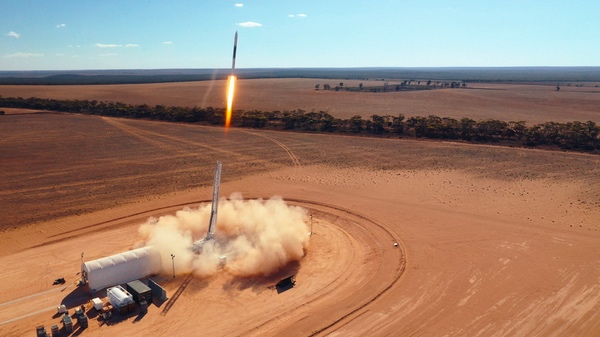 HyImpulse launched its SR75 sounding rocket May 3, testing technology for a future orbital launch vehicle. (credit: HyImpulse) HyImpulse launched its SR75 sounding rocket May 3, testing technology for a future orbital launch vehicle. (credit: HyImpulse) |
A third German company, though, recently beat the other two in terms of getting a rocket launched—just not to orbit. Last Friday, HyImpulse launched its SR75 sounding rocket from a facility in South Australia run by spaceport company Southern Launch. The SR75 rocket “operated as planned,” HyImpulse said in a statement, but did not disclose the vehicle’s peak altitude.
SR75 is designed to carry up to 250 kilograms of payload to an altitude of 250 kilometers using a hybrid propulsion system: solid paraffin fuel and liquid oxygen. It is also a technology precursor for SL1, a small launch vehicle the company is developing to place up to 600 kilograms into low Earth orbit.
“We’re signaling Germany’s prowess as a spacefaring nation and expanding Europe’s access to space,” Mario Kobald, cofounder and co-CEO of HyImpulse, said in a statement, adding that the company planned to conduct its first orbital launch attempt as soon as the end of 2025.
Other launch companies in Europe are making progress with another key aspect of launch vehicle development: raising money. Spanish launch vehicle developer PLD Space said last month it had now raised 120 million euros ($129 million) from both investors and the Spanish government. The company, which successfully launched its Miura 1 suborbital rocket last October, is now working on the Miura 5 small launch vehicle. That 120 million euros is over the life of the company, and it did not disclose the size of any new round.
“The funding for our work has been one of the most difficult tasks in developing our Miura family of rockets. Despite this, the successful launch of Miura 1 has bolstered our position as leaders in the industry, an achievement acknowledged by investors and clients,” Raúl Verdú, co-founder and chief business development officer of PLD Space, said in a statement.
PLD Space said its funding will go towards an expansion of its production facilities and work on a launch site in French Guiana. It plans an initial demonstration launch of Miura 5 next year with commercial launches beginning in 2026.
Orbex, a launch vehicle developer based in Scotland, also announced last month it has raised an additional $21 million as an extension to an earlier Series C round. Orbex is developing Prime, a small launch vehicle it plans to launch from a site called Sutherland Spaceport it is developing in northern Scotland.
“Our technology is pivotal in making the U.K. a hub for European orbital launch, and we are entering a critical phase of development,” Orbex CEO Phillip Chambers said in a statement about the new funding. “This additional funding will support our goal to push on into an operational launch phase, and scale our business when the time comes.”
| “If they were not there,” PLD Space’s Gallego said of SpaceX, “maybe we would not be here.” |
It’s not clear, though, when that time will come, as Prime has suffered extensive delays and Orbex changes in leadership: when Chambers was named CEO early this year, he was the fourth person to hold the post in a permanent or acting manner in less than a year. The company declined to offer an estimate for when Prime will launch.
This all suggests that, soon, Europe will have an array of options for launching smallsats and restored capability for larger ones when Ariane 6 is introduced and Vega C flights resume. However, they will continue to face challenges from the same company Europe is now relying on for launching critical missions: SpaceX.
At the Satellite 2024 panel, for example, executives from European and other launch companies were worried that SpaceX’s current dominant position could be further entrenched by Starship, with greater mass to orbit and lower per-kilogram costs. “Starship for sure will disrupt further the launch business and the space business in general,” said Marino Fragnito, senior vice president and head of the Vega business unit at Arianespace. “One scenario is that Musk could really monopolize everything.”
That included one scenario where Starship, outfitted with orbital transfer vehicles, could provide tailored launches of smallsats on rideshare missions—similar to what SpaceX offers now with Transporter and Bandwagon smallsat rideshare missions on Falcon 9—delivering payloads to their desired orbit for far less than small launch vehicles. In that scenario, he concluded, “it will be difficult for small launch vehicles.”
Others on the panel, though, said they were focusing on their own vehicles, or even thanking SpaceX for stimulating smallsat demand through low-cost rideshare launches. “If they were not there,” Pablo Gallego, vice president of customers and sales at PLD Space, said of SpaceX, “maybe we would not be here.”
The Galileo launch last month was the first European government mission to launch on Falcon 9 this year but not the last. In the coming weeks, ESA will launch its EarthCARE spacecraft on a Falcon 9, followed by its Hera asteroid mission this fall on another Falcon 9. Two more Galileo satellites are also scheduled to launch later this year on a Falcon 9—or, rather, “a launcher.”
Jeff Foust (jeff@thespacereview.com) is the editor and publisher of The Space Review, and a senior staff writer with SpaceNews. He also operates the Spacetoday.net web site. Views and opinions expressed in this article are those of the author alone.

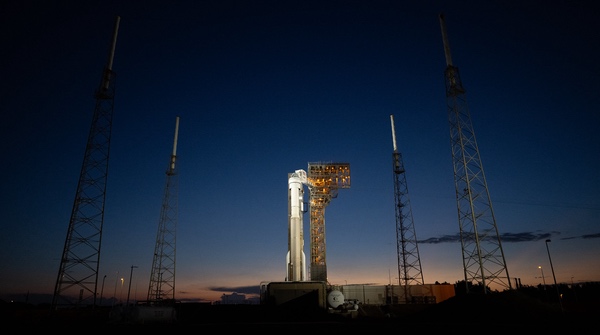 Starliner is set to launch as soon as Monday night on its first crewed flight. (credit: NASA/Joel Kowsky)
Starliner is set to launch as soon as Monday night on its first crewed flight. (credit: NASA/Joel Kowsky)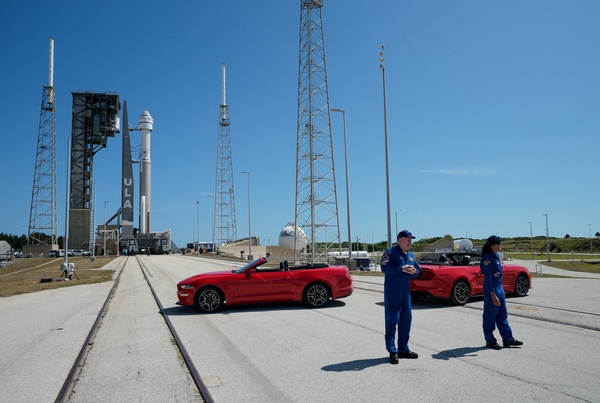 The Starliner Crew Flight Test (CFT) astronauts, Butch Wilmore and Suni Williams, after the spacecraft and its Atlas 5 rocket rolled out to the pad May 4. (credit: NASA/Joel Kowsky)
The Starliner Crew Flight Test (CFT) astronauts, Butch Wilmore and Suni Williams, after the spacecraft and its Atlas 5 rocket rolled out to the pad May 4. (credit: NASA/Joel Kowsky)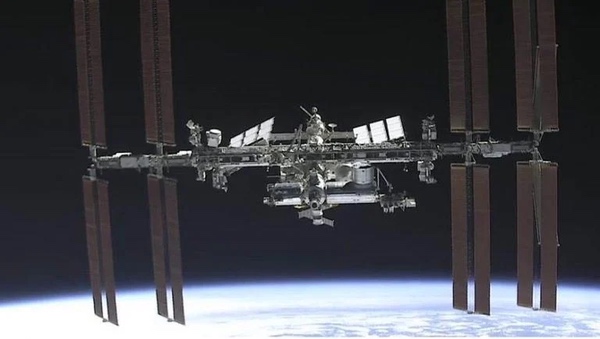 The ISS was the source of a piece of debris that hit a Florida home in March. (credit: NASA)
The ISS was the source of a piece of debris that hit a Florida home in March. (credit: NASA)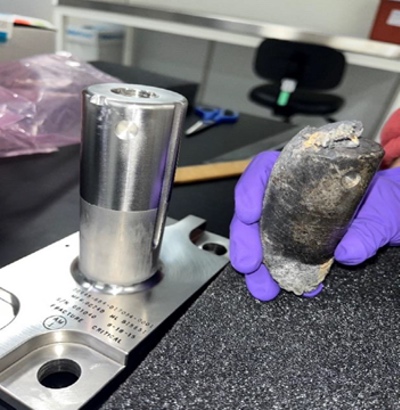 NASA analysis confirmed the debris that hit a Florida home came from a pallet jettisoned from the ISS. (credit: NASA)
NASA analysis confirmed the debris that hit a Florida home came from a pallet jettisoned from the ISS. (credit: NASA)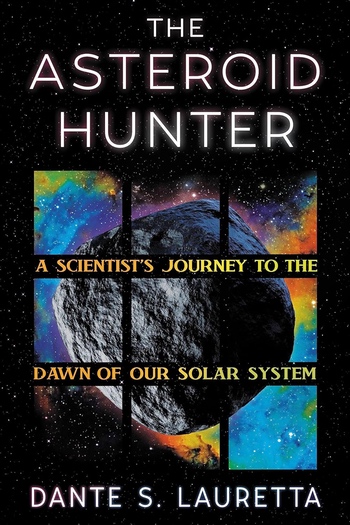
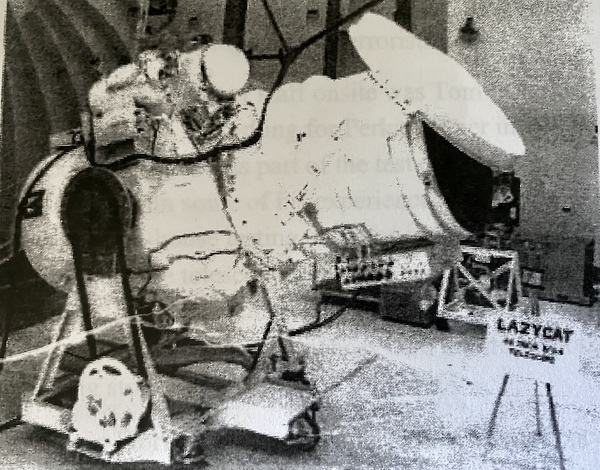 The Lazy Cat telescope was built by Perkin-Elmer and installed on a mountaintop in Iran in the fall of 1977. It was designed to detect lasers from the Sary Shagan test range when they were pointed at satellites in low Earth orbit. It did not become operational before the Iranian revolution led to the facility being abandoned by the CIA in early 1978. (credit: author)
The Lazy Cat telescope was built by Perkin-Elmer and installed on a mountaintop in Iran in the fall of 1977. It was designed to detect lasers from the Sary Shagan test range when they were pointed at satellites in low Earth orbit. It did not become operational before the Iranian revolution led to the facility being abandoned by the CIA in early 1978. (credit: author)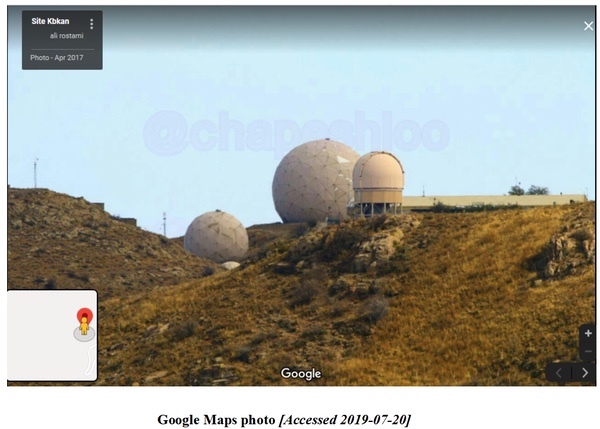 The dome on the right was built atop a mountain in Iran to house the Lazy Cat telescope. The CIA operated an array of sensors on the mountain to gather intelligence from inside the Soviet Union. (credit: Google)
The dome on the right was built atop a mountain in Iran to house the Lazy Cat telescope. The CIA operated an array of sensors on the mountain to gather intelligence from inside the Soviet Union. (credit: Google)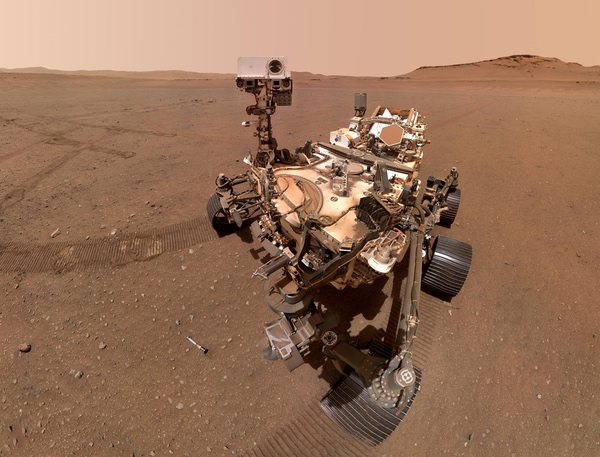 A selfie taken by the Perseverance rover showing one of its sample tubes on the ground. NASA is still working to figure out how to get those samples back to Earth effectively. (credit: NASA/JPL-Caltech/MSSS)
A selfie taken by the Perseverance rover showing one of its sample tubes on the ground. NASA is still working to figure out how to get those samples back to Earth effectively. (credit: NASA/JPL-Caltech/MSSS)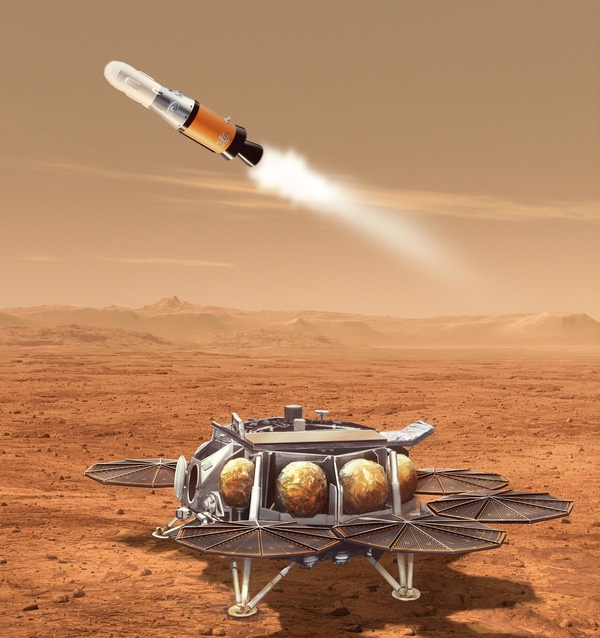 NASA says it is particularly interested in alternatives to the Mars Ascent Vehicle rocket, a key driver in the size and cost of the overall MSR architecture. (credit: NASA/JPL-Caltech)
NASA says it is particularly interested in alternatives to the Mars Ascent Vehicle rocket, a key driver in the size and cost of the overall MSR architecture. (credit: NASA/JPL-Caltech) NASA administrator Bill Nelson told House appropriators he was “quite sanguine” about the future of MSR despite current problems. (credit: NASA/Joel Kowsky)
NASA administrator Bill Nelson told House appropriators he was “quite sanguine” about the future of MSR despite current problems. (credit: NASA/Joel Kowsky)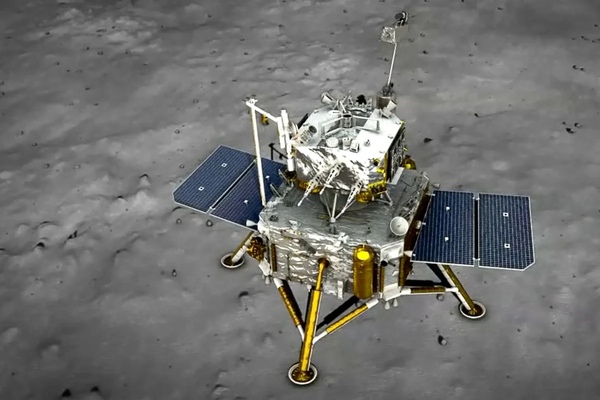 An illustration of Chang’e-6 on the surface of the lunar farside. (credit: CNSA)
An illustration of Chang’e-6 on the surface of the lunar farside. (credit: CNSA)
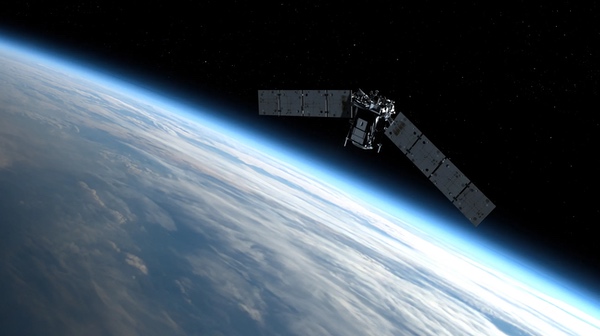 NASA’s TIMED spacecraft came within ten meters of a defunct Russian satellite in February, narrowly avoiding a collision that would have created thousands of pieces of debris in low Earth orbit. (credit: Johns Hopkins APL/Steve Gribben)
NASA’s TIMED spacecraft came within ten meters of a defunct Russian satellite in February, narrowly avoiding a collision that would have created thousands of pieces of debris in low Earth orbit. (credit: Johns Hopkins APL/Steve Gribben)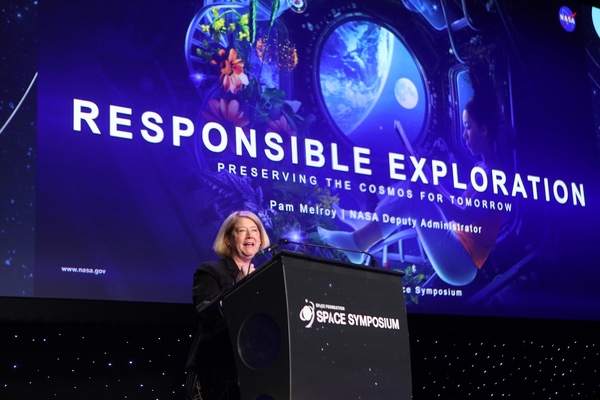 NASA deputy administrator Pam Melroy discusses NASA’s new Space Sustainability Strategy at the 39th Space Symposium April 9. (credit: Space Foundation)
NASA deputy administrator Pam Melroy discusses NASA’s new Space Sustainability Strategy at the 39th Space Symposium April 9. (credit: Space Foundation)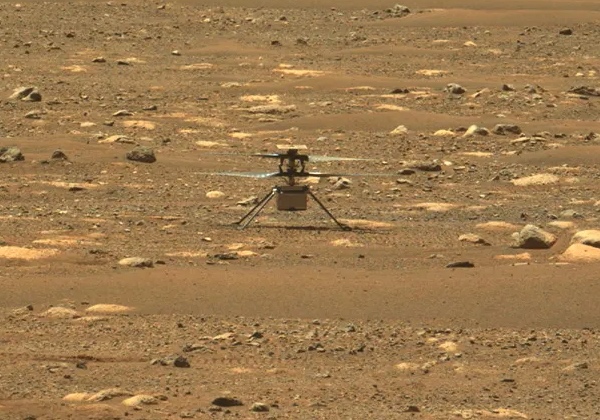 The Ingenuity Mars helicopter performed 72 flights over nearly three years. (credit: NASA/JPL-Caltech/ASU)
The Ingenuity Mars helicopter performed 72 flights over nearly three years. (credit: NASA/JPL-Caltech/ASU)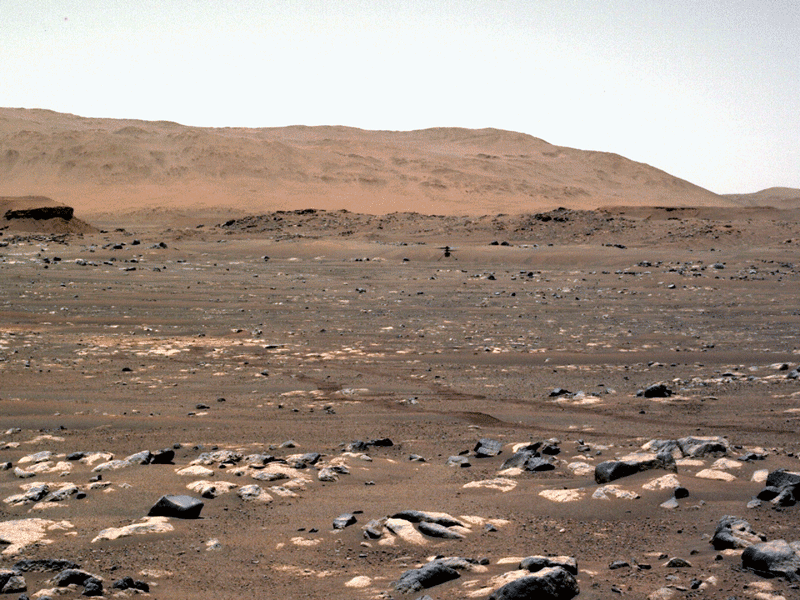 (credit: NASA/JPL-Caltech)
(credit: NASA/JPL-Caltech)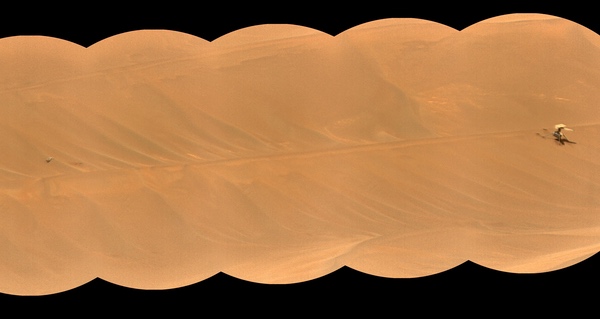 A mosaic shows the final resting place of Ingenuity (right) as well as one of rotor blades. [
A mosaic shows the final resting place of Ingenuity (right) as well as one of rotor blades. [